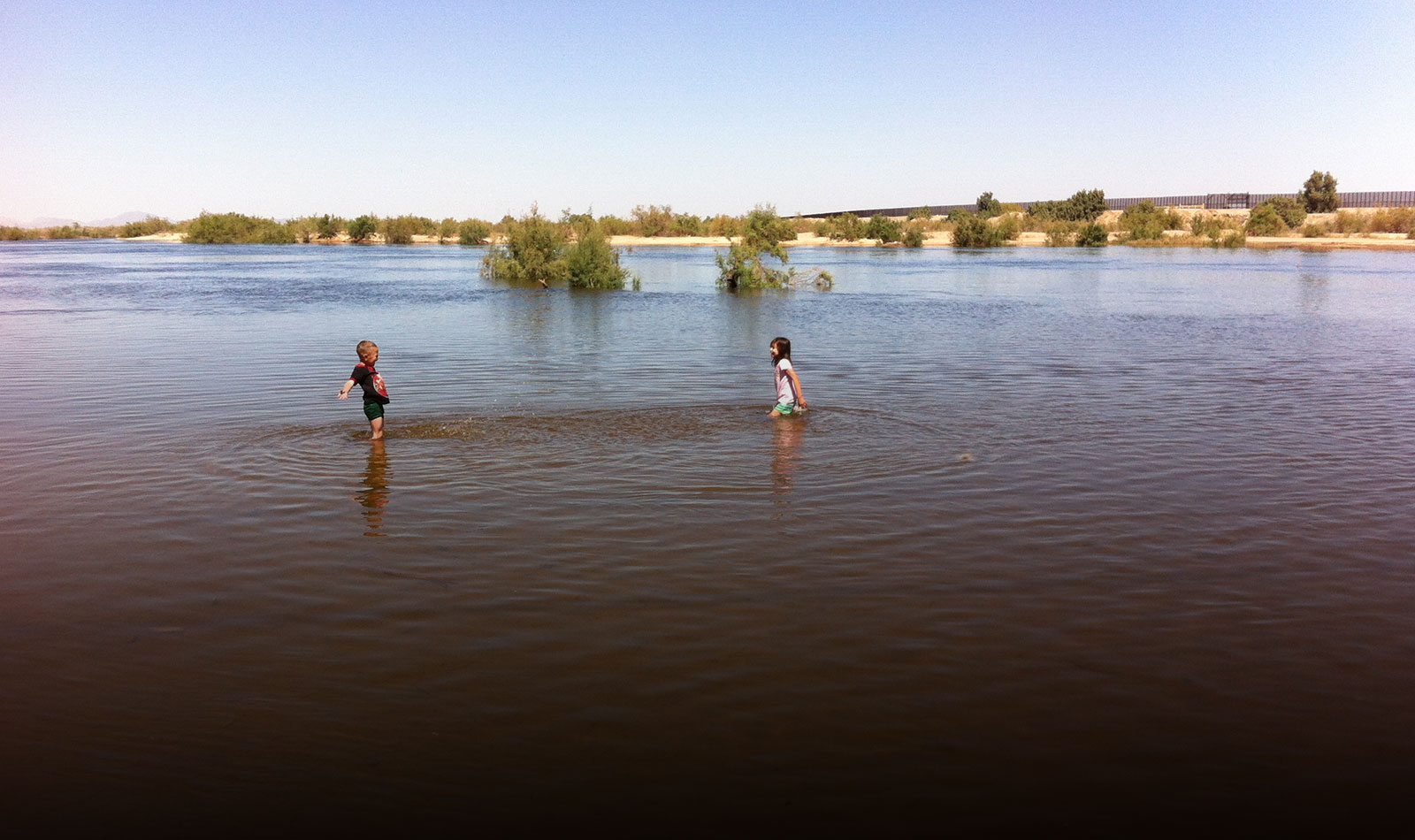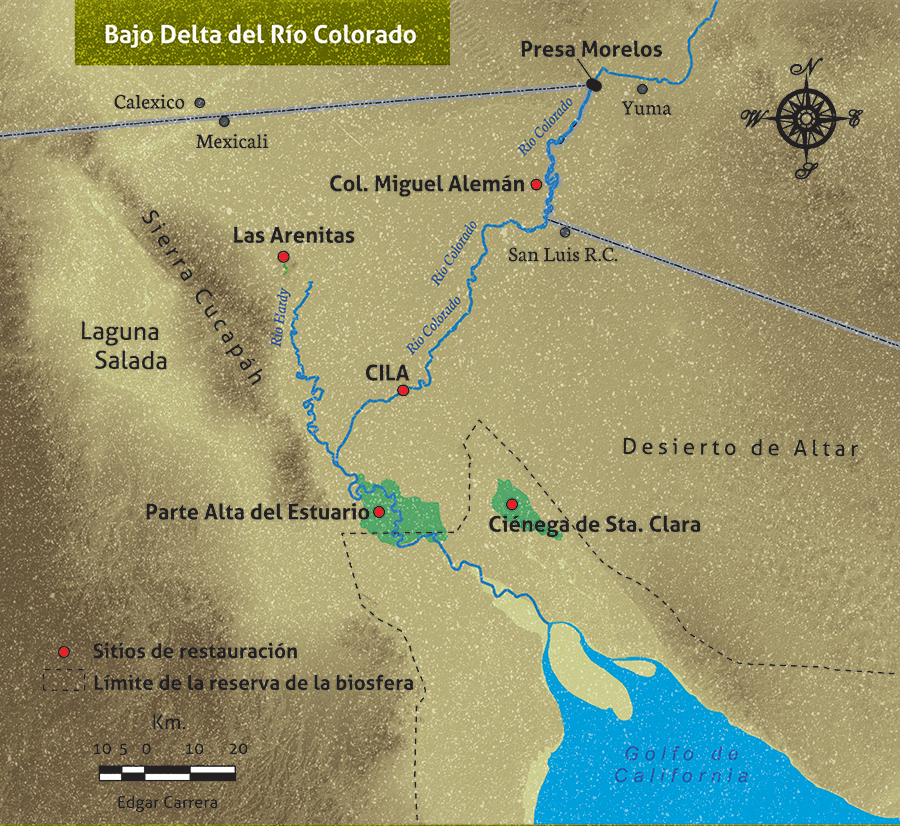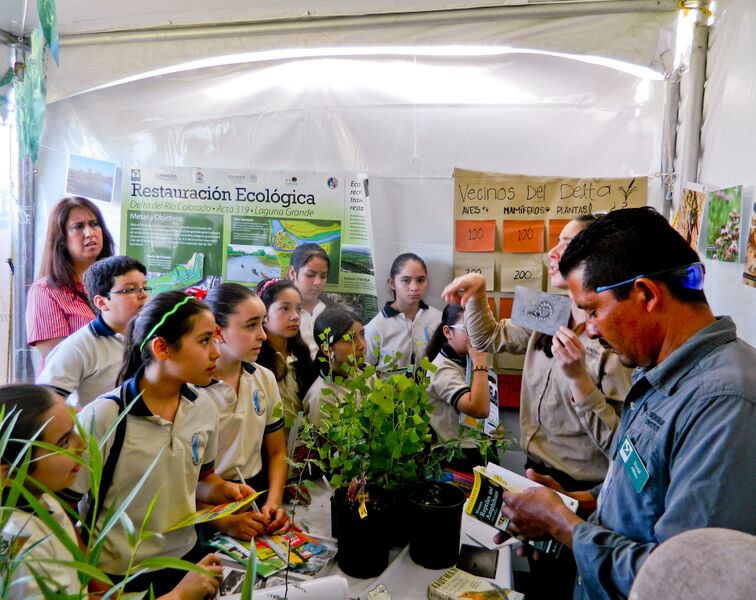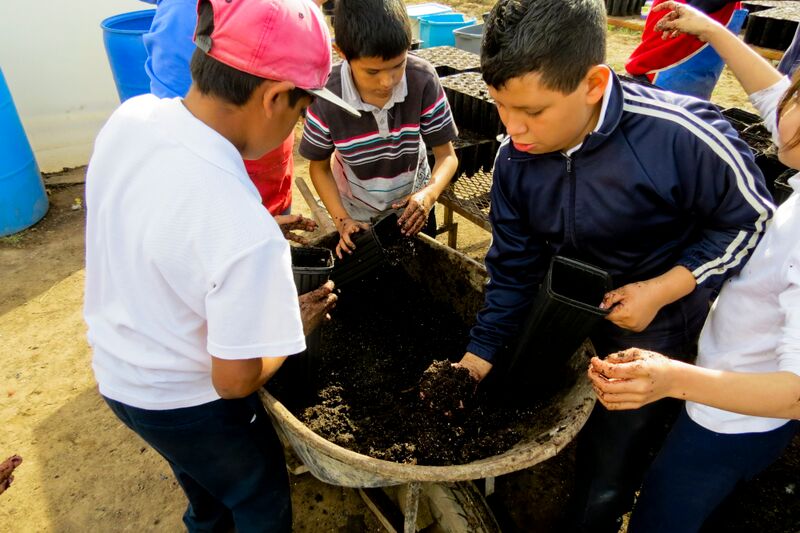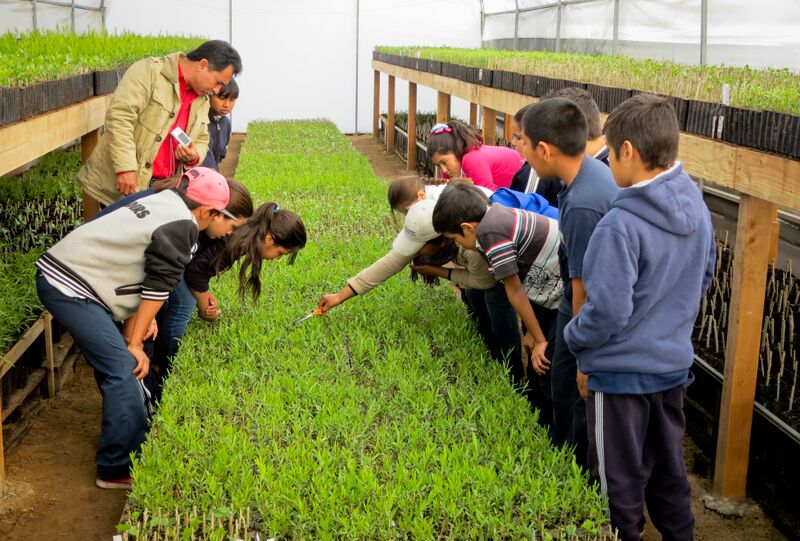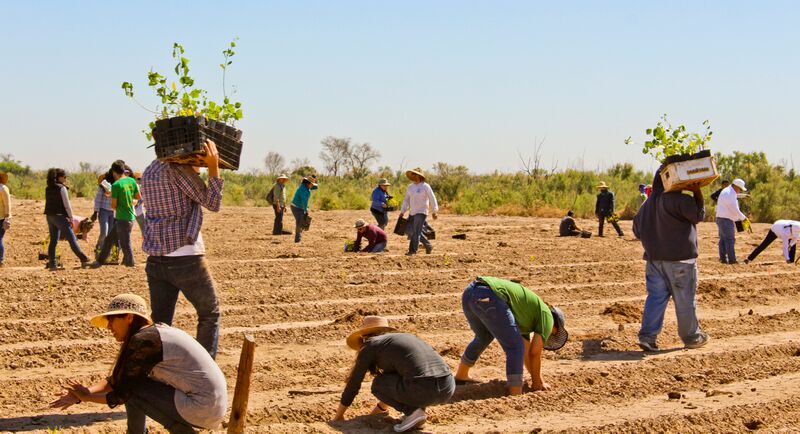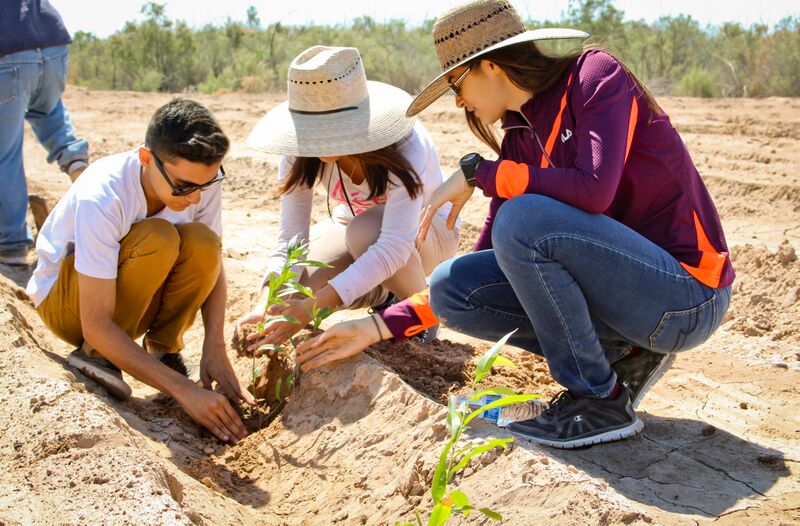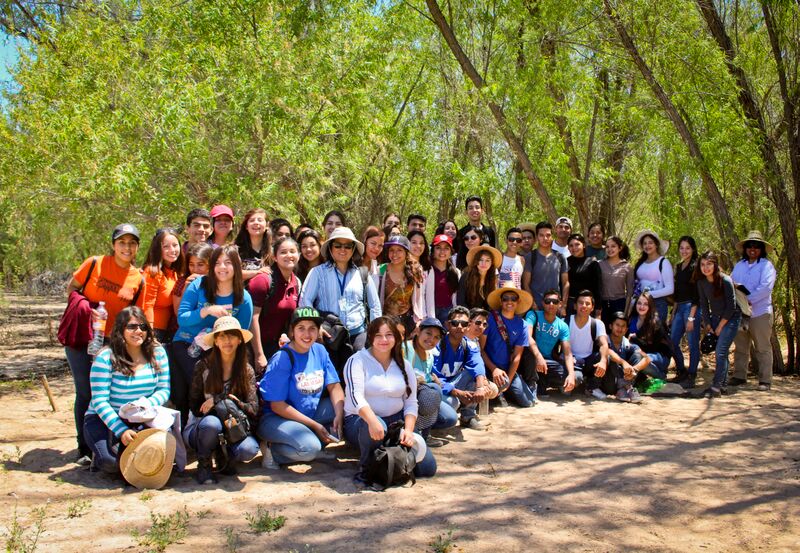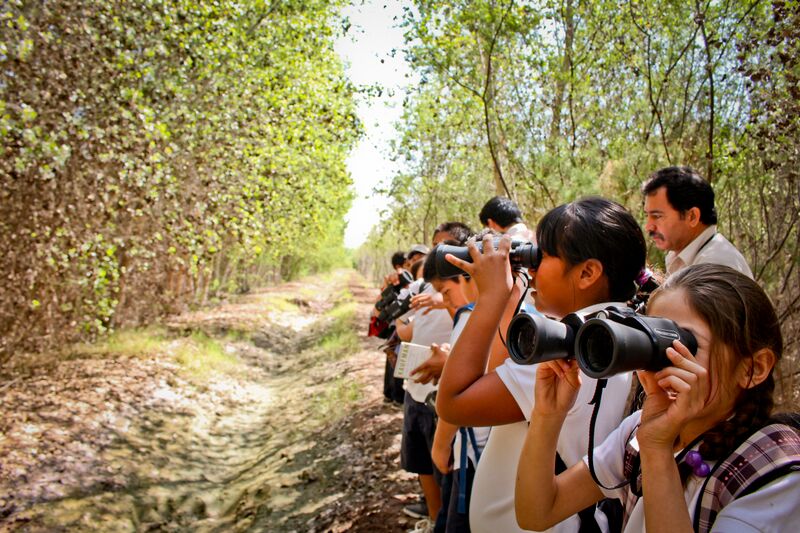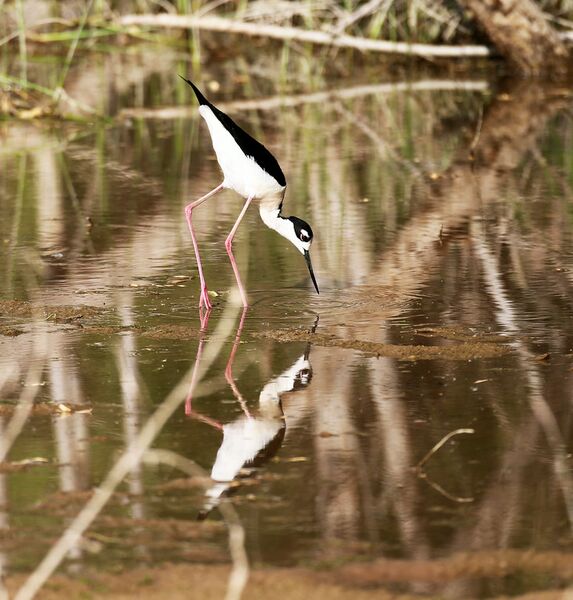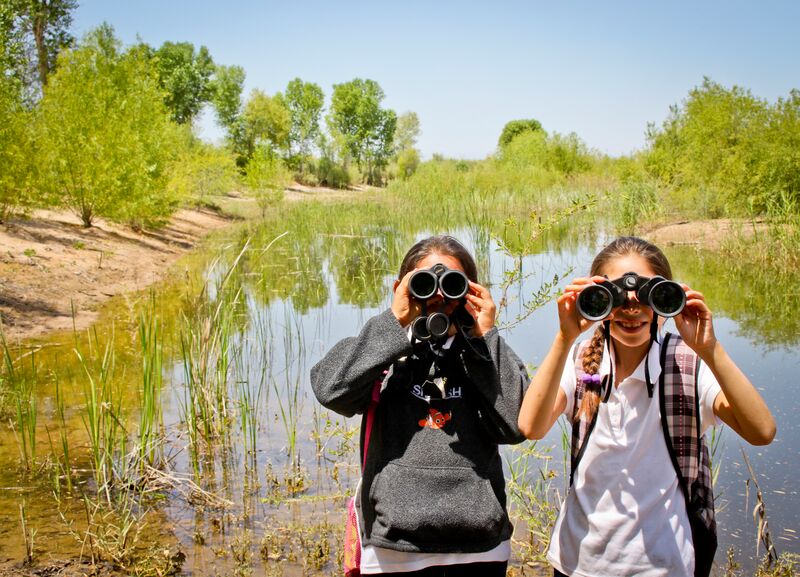a story of Sonoran Institute’s community engagement in the Colorado River Delta
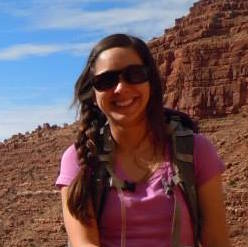
Gabriela González Olimón, Environmental Education Coordinator for the Colorado River Delta Program at Sonoran Institute Mexico
By: Gabriela González Olimón
Mexicali, Baja California‒ I am watching kids skim their fingers on the water, sitting on the edge of what is left of this river.
Restoring a fragile ecosystem is a very ambitious project; nonetheless Sonoran Institute has been working in the Delta for nearly 20 years. Our goal from day one: Reconnect the Colorado River with the Gulf of California and actively engage the communities of the Delta in this process. Reconnecting the River will contribute to the restoration of the riparian and estuarine ecosystems of the Delta and renewing the relationships between these ecosystems and their people. Community involvement will ensure that future generations build on this work.
We started by involving the community, especially children and youth, to help them gain a basic understanding and sense of awareness of the Colorado River Delta and its associated challenges and opportunities. A major component of this effort became formal when we were able to officially start an environmental education program in January 2015. Sonoran Institute’s education program aims to provide the community with opportunities to be actively involved in working towards resolving environmental problems in the Delta, and create positive behavioral patterns necessary to restore the ecosystems to a more sustainable and healthier form. We currently offer in-school programs to teach kids about the local riparian and estuarine ecosystems. We also offer field trips to our restoration sites (Laguna Grande Restoration Site, Hardy River, and the Colorado River estuary) and native tree nursery where we are growing over 100,000 trees to be planted each spring. There, through observation and games, children explore and study plant and animal relationships as well as the importance of water to the dynamics of the ecosystem and region.
We hit the ground running in January and so far our environmental education program has conducted more than 47 restoration site visits and in-school workshops. Numerous national and international government agencies, NGO’s, K-12 and university students, community members, and donors have visited one or more of our restoration sites or have attended our workshops.
This spring we hosted a reforestation event where, with the help of 250 volunteers, we planted more than 5,624 cottonwoods and willows at Laguna Grande. Josué Reyes, a high school student and volunteer, said that “Reforesting sustains nature, as well as our own existence” as he dug a hole for his young cottonwood tree. For as little as $25, you can sponsor a child to attend environmental education workshops and birding activities.
While visiting an elementary school in Ejido Francisco Murguia, a small community in Baja California, México, that lies 25 miles from the US-México border, and within a mile of the old Colorado River channel, I asked a group of kids if they knew where their water came from. With their wide eyes avoiding mine, I knew their answer. A lot of the kids have never seen the River nor do they know that one –a big one!—used to flow through their community a couple generations ago. Educating communities and showing them what they have around them, so they can protect it, is exactly the reason why we are doing this project. What started with one fifth-grade group in January has grown to more than 1,300 people reached by June 2015.
I watch the kids skim their fingers on the water, sitting on the edge of a river that is making a comeback.
Gabriela González Olimón: Gabriela is the Environmental Education Coordinator for the Colorado River Delta Program at Sonoran Institute Mexico, A.C. in the Mexicali, Baja California office. Gabriela graduated in Biology from Universidad Autónoma de Baja California. She has experience in wildlife monitoring and has implemented environmental education programs in Mexican National Parks and at Grand Canyon National Park in Arizona. Now in the Delta, Gaby focuses on promoting ecological restoration in the communities near the Delta.
- Sonoran Institute has already facilitated 182 hectares of restored riparian habitat. Our goal is to exceed 304 hectares of restored riparian habitat in the Delta region by 2017.
- Classroom interaction is vital to the learning and appreciation process for the children. We like to engage the kids in the purpose of our restoration efforts before they take to the sites!
- Sonoran Institute aims to inspire people through place based education. It is so important that we teach our youth about their local flora and fauna.
- Before visiting our restoration sites kids learn about the plant cycle with hands-on activities in the native tree nursery.
- Hard work and long hours from 250 volunteers makes planting more than 5,000 cottonwoods and willows possible over the course of a weekend. To plant the full 110,000 trees, we rely on seasonal workers, our dedicated staff, and additional volunteers. If you would like to help, let us know!
- With more than 5,000 trees to plant in the Delta during our reforestation event in April, high school ecology classes took to the field in reforesting our Laguna Grande Restoration Site. Base flows secured by the Colorado River Delta Water Trust will water these trees until they are able to tap into ground water.
- It’s a rewarding feeling for this high school ecology class to contribute their hard work and knowledge in order to experience ecological restoration first hand. These students will be the next generation of conservationists to build on the current work in the Delta.
- Thanks to generous donations, kids from Ejido Francisco Murguia had the opportunity to explore their backyard and see native birds flock at the Laguna Grande Restoration Site. The canopy of trees pictured were planted in the last 3 years.
- The best part of our restoration efforts and teaching the kids is being able to show them the good that comes with their hard work. Like seeing native birds returning to their native habitat.
- Just $25 can sponsor a child to attend environmental education workshop and birding activities at Laguna Grande. One day in nature for a child could mean a lifetime of appreciate and conservation.

